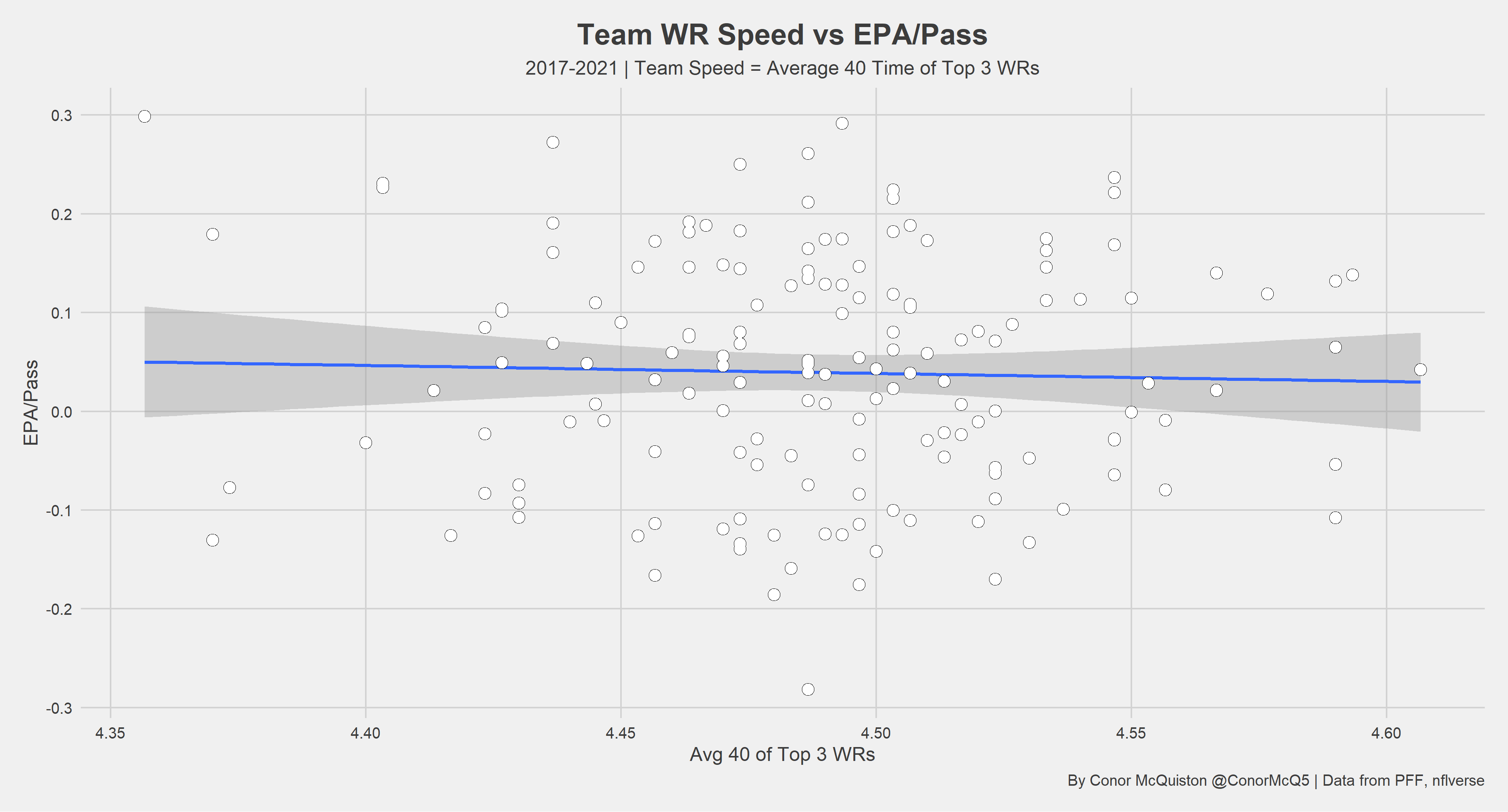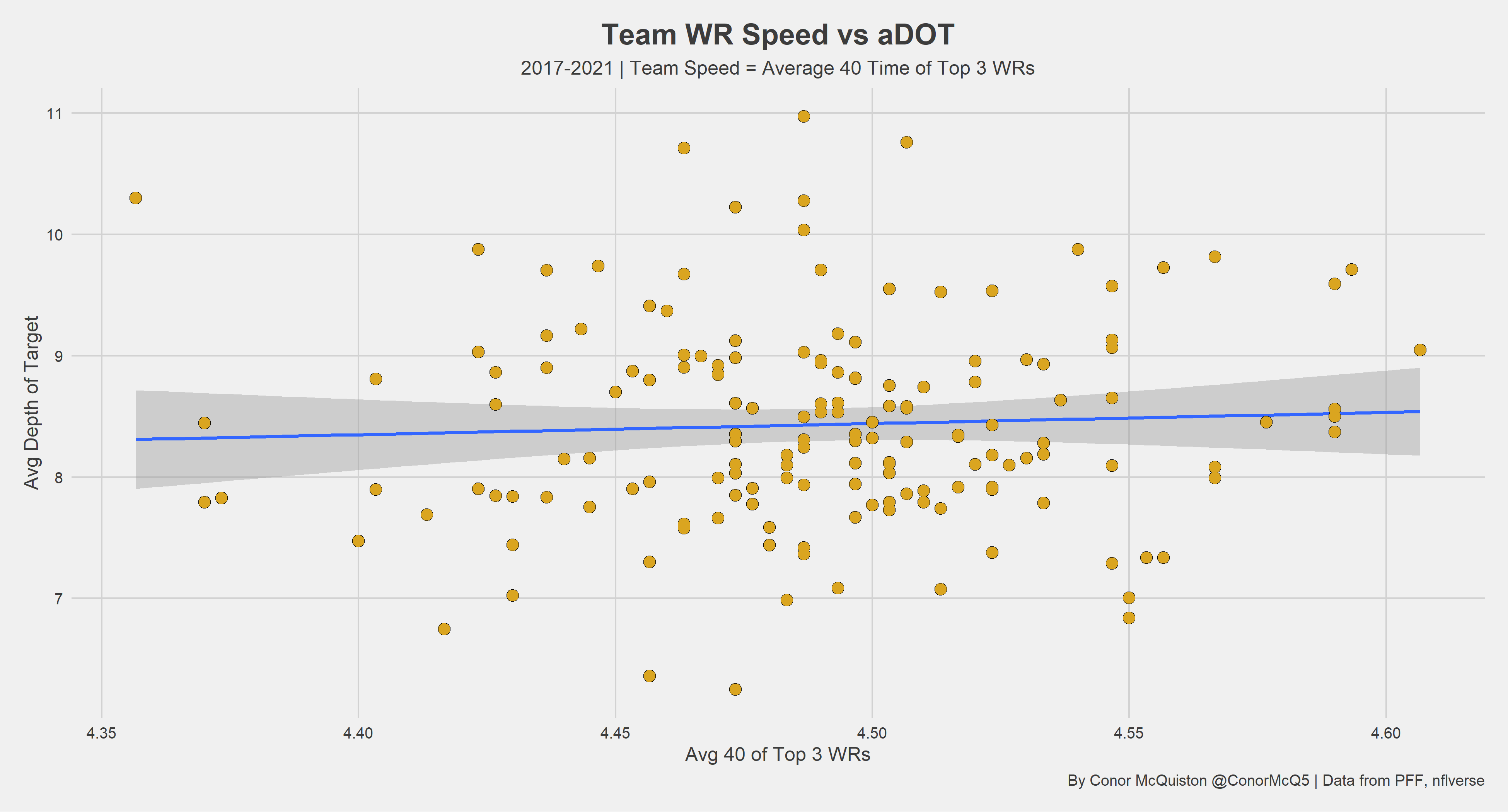It sometimes seems as though the NFL loves speedy wide receivers more than anything else. A wideout prospect's 40-yard dash time is the single biggest predictor of where they’ll be drafted, and there are subsequently countless examples of players being overdrafted in large part due to their elite speed, including John Ross and Darrius Heyward-Bey. This valuation of fast receivers begs the question: Is it warranted? Does having speed in the wide receiver room have that much of an impact on an NFL team?
On the individual play level and for individual matchups, the obvious answer is yes. The Kansas City Chiefs will not be able to call and run the same set of plays without Tyreek Hill as they would with him. Similarly, defenses will call different coverages against the Chiefs and play them in different ways with Hill absent. The more interesting question is whether in the aggregate these micro changes result in a significant macro change.
We’ll be looking at the average 40 times of the three most-used wide receivers on each NFL team to evaluate team speed at the position. We will also be focusing on the past five seasons to assure we only are considering the modern NFL. The first thing to look at is if teams with faster wideouts have more efficient passing offenses.

The above plot suggests there is no aggregate relation between overall passing production and team wide receiver speed. But this is also a ridiculous standard to hold teams to. The more realistic claim to interrogate is that having speed at wide receiver allows an offense to do things it otherwise couldn’t. The two most obvious things speedy wideouts theoretically allow an offense to do are stretch the field more in the passing game and be more successful on screens. So, let’s examine if this happens in practice.

Exclusive content for premium subscribers

WANT TO KEEP READING?
Dominate Fantasy Football & Betting with AI-Powered Data & Tools Trusted By All 32 Teams
Already have a subscription? Log in



 © 2025 PFF - all rights reserved.
© 2025 PFF - all rights reserved.